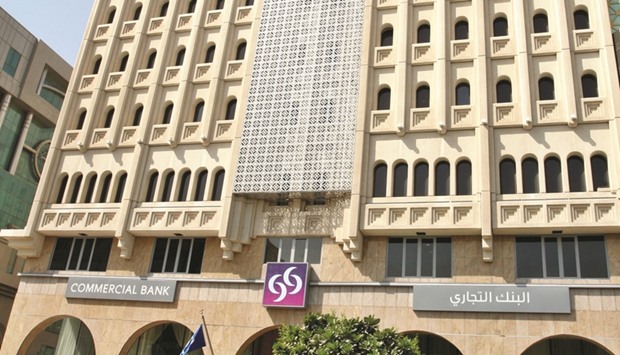Capital Intelligence (CI), the international credit rating agency, yesterday affirmed Commercial Bank’s financial strength rating (FSR) at ‘A-’.
In view of the bank’s systemic importance, the support rating is affirmed at ‘2’. Accordingly, the long and short term foreign currency ratings of ‘A’ and ‘A2’ are affirmed, reflecting the lender’s intrinsic financial profile and franchise, together with the demonstrated government support for Qatari banks.
The outlook on all ratings has, however, been revised to ‘negative’ in view of the deterioration in asset quality metrics and an overall weaker financial profile.
The FSR is supported by the bank’s diversified franchise, a good capacity to generate non-interest income in normal years and the sustained growth potential of the Qatari economy, despite downside risks induced by the fall in oil prices, CI said.
The rating is “constrained” by the bank’s tight liquidity and associated refinancing risks (despite good access to capital markets to date), relatively weak asset quality and sharply lower profitability, it added.
Given the Commercial Bank had previously consistently generated good and diversified revenues from its investments in associate banks in the UAE and Oman, it is possible that this will again be the case this year — although both the Oman and UAE economies are facing economic headwinds that are likely to be reflected in the earnings of the banking sectors in the two countries, it said.
Liquidity has also noticeably tightened in both the banking systems, while non-performing loan accretion has increased — especially for the small and medium enterprises (SMEs) in the UAE, it found.
The Turkish economy by contrast benefits from low oil prices, but has other economic and political issues that may impact its market — and therefore the contribution from Abank — especially when the probability of further foreign exchange translation losses is factored in.
“Despite Qatar’s high economic growth potential, the local market remains small, particularly for a bank like Commercial Bank with a low share of government sector business, CI said, adding economic conditions in Qatar are expected to remain positive and to still support moderate credit growth in 2016.
Growth prospects are, however, not as good in Oman and the UAE, with the gross domestic product growth in the latter possibly falling to the 2.5% level, it said, adding banks have been cutting back on credit, job losses are rising and SME failures have increased sharply. Although Oman is a smaller market, liquidity has tightened and there too the government is cutting back, according to CI. Although Commercial Bank still has a sound Basel III capital adequacy ratio, the overall capital is more of a constraining factor due to the relatively low free capital to total capital ratio, reflecting the bank’s business model (investment in associates which is deducted from free capital under CI’s definition) and capital mix (usage of AT-1 and subordinated debt).
The bank’s recent 2016 issue of AT-1 (additional Tier I) notes will reinforce funding and total regulatory capital, but not CET-1 (common equity Tier 1).
Finding that the bank has had a long record of success in refinancing, and this has been underlined by the new borrowings raised in 2015 and the February 2016 AT-1 issue; it said, however, funding conditions for GCC (Gulf Cooperation Council) institutions are tightening and appetite may be falling as pricing rises.
“In such an environment, running what are quite tight liquidity ratios heightens risks. Should the strain on the financial profile in 2015 prove to be more than temporary and should asset quality and liquidity metrics fail to show significant improvement in 2016, all ratings would come under downward pressure, possibly of a sufficient level to trigger a downgrade,” CI said.

The long and short term foreign currency ratings of ‘A’ and ‘A2’ are affirmed, reflecting Commercial Bank’s intrinsic financial profile and franchise, together with the demonstrated government support for Qatari banks. PICTURE: Nasar TK
